Does Making Your Site Accessible Help It Rank Higher? (A 2025 SEO Study)
In a world where online visibility is everything, the relationship between web accessibility and search engine performance is drawing fresh attention. As businesses strive to improve user experience and stay competitive in search rankings, one particular question comes into focus:
Does making your site accessible actually help it rank higher?
To explore this, we partnered with Semrush to conduct an in-depth analysis across 10,000 websites. Our goal? To determine whether accessibility features like alt text, keyboard navigation, sufficient contrast ratios, and semantic HTML, correlate with improved SEO outcomes.
In this study, we break down the data, highlight key trends, and unpack what it all means for marketers, developers, and business owners aiming to create both inclusive and high-performing websites.
Spoiler Alert: This study of 10,000 websites shows a clear trend: Accessible Websites Rank Better!
A Quick Summary of Our Findings
If you don’t have time to read through the entire study, here’s a quick recap of what we uncovered.
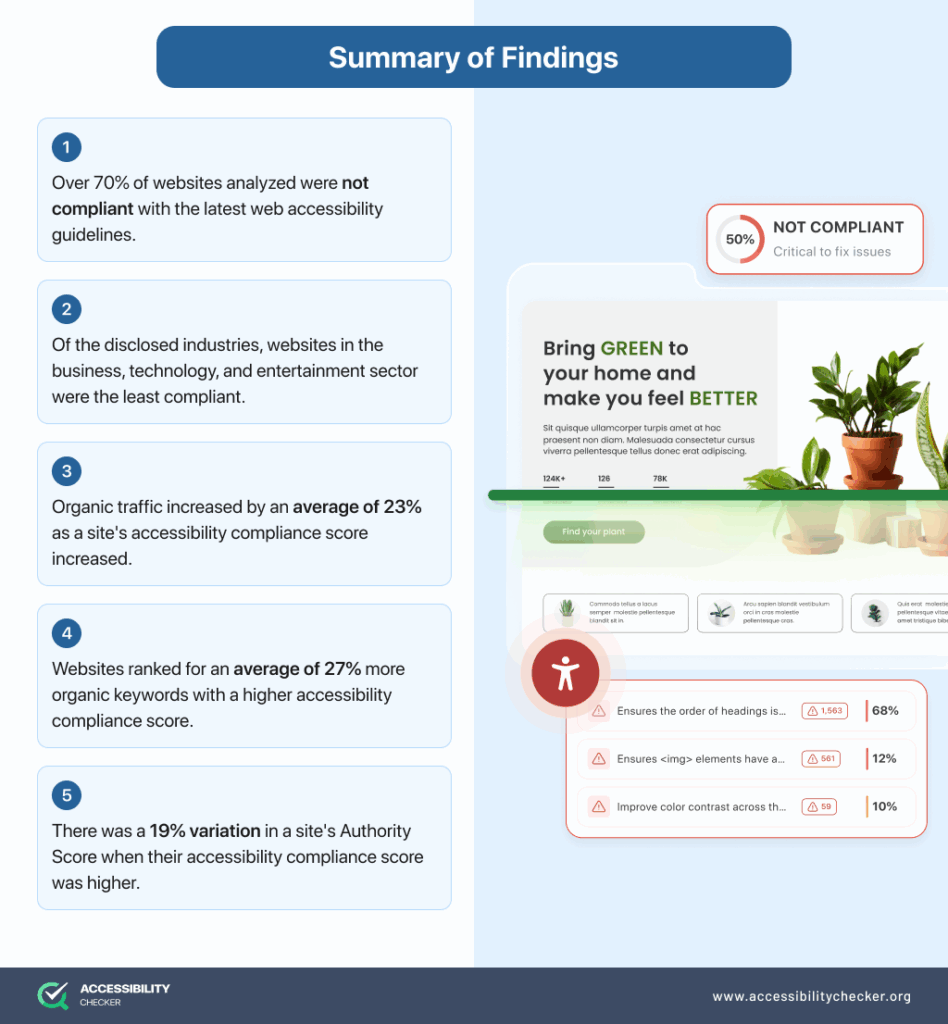
Key Takeaways
- Over 70% of websites analyzed were not compliant with the latest web accessibility guidelines.
- Of the disclosed industries, websites in the business, technology, and entertainment sectors were the least compliant;
- Organic traffic increased by an average of 23% as a site’s accessibility compliance score increased.
- Websites ranked for an average of 27% more organic keywords with a higher accessibility compliance score.
- There was a 19% variation in a site’s Authority Score when its accessibility compliance score was higher.
Why We Pursued This Research
At AccessibilityChecker.org, our mission has always been to promote inclusive digital experiences that work for everyone. But as the digital landscape continues to evolve, we noticed a growing intersection between three key areas: search engine optimization (SEO), user experience (UX), and web accessibility.
Over the past few years, SEO strategies have become increasingly focused on providing genuine value to users. This looks like faster load times, mobile responsiveness, intuitive navigation, and clear, well-structured content. Interestingly, these are also foundational principles of web accessibility.
This overlap sparked a key question: Could improving accessibility also contribute to better search rankings?
We decided to dig deeper.
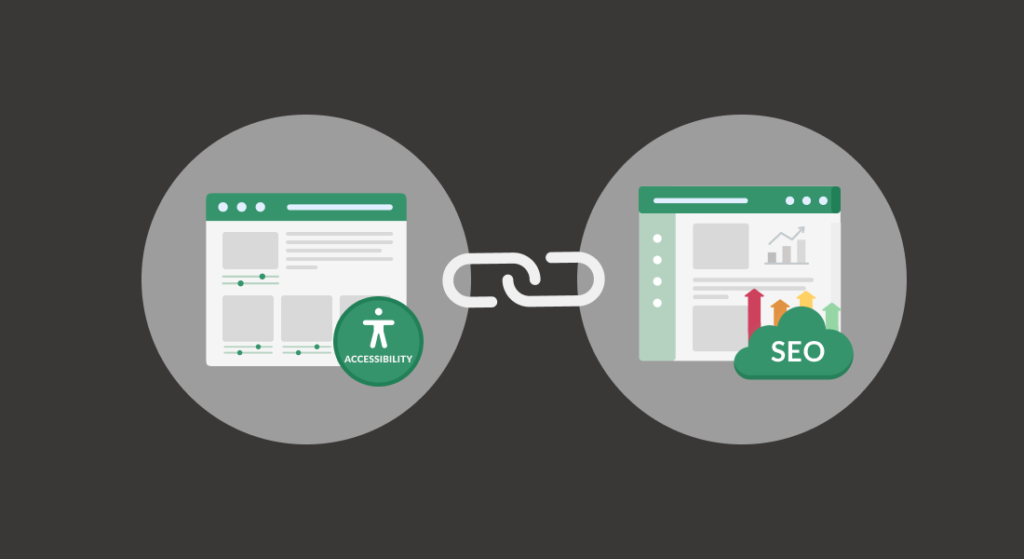
In partnership with Semrush, we set out to understand whether websites that meet accessibility standards also tend to perform better in search results.
But our motivation goes beyond SEO.
Accessibility is no longer optional. With legislation like the ADA, WCAG, and similar laws gaining traction worldwide, businesses now face legal obligations to make their digital platforms accessible to all users.
At the same time, consumer expectations have changed. Today’s users expect a seamless, frustration-free online experience, regardless of ability, device, or internet speed.
This research aims to bring clarity to the business case for accessibility: not just as a compliance checkbox, but as a powerful contributor to performance, brand trust, and user satisfaction.
Picking the Right Research Partners
To truly understand the connection between web accessibility and search engine performance, we knew this research needed to be grounded in reliable, large-scale data. That’s why partnering with a respected name in SEO analytics was non-negotiable.
We needed research partners with access to a vast and diverse dataset, sophisticated analysis tools, and a strong reputation for accuracy and insight. Semrush and BuiltWith were obvious choices.
Semrush
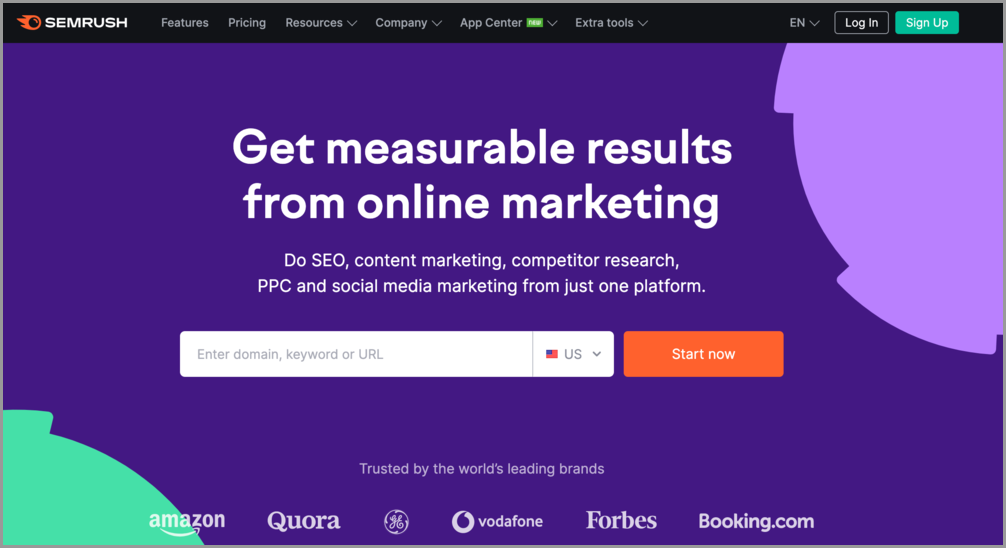
Semrush is a global leader in online visibility and marketing analytics. Trusted by over 10 million marketing professionals and agencies worldwide, they offer one of the most comprehensive SEO platforms available, tracking everything from keyword rankings and domain authority to traffic sources, technical site health, and competitor benchmarks.
Their tools are used by some of the world’s most successful digital teams to make data-driven decisions that impact everything from content creation to paid search strategies. With an extensive dataset covering millions of websites across various industries and geographies, Semrush brought exactly the depth and credibility this project required.
BuiltWith
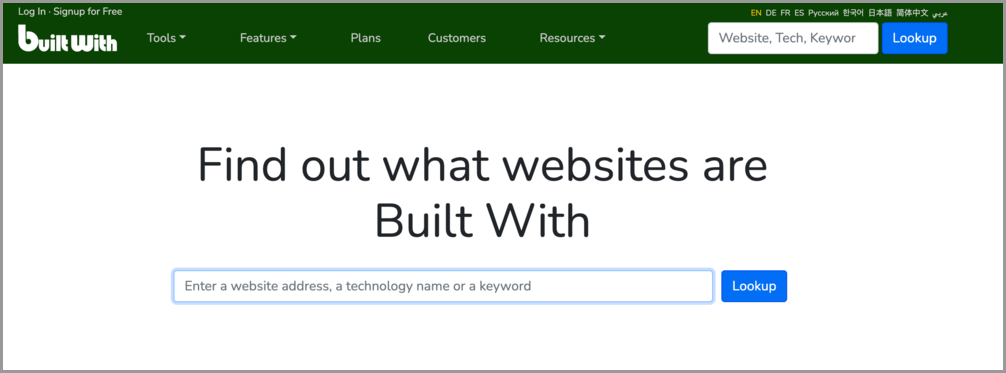
BuiltWith is an online tool that reveals the technologies behind any given website. It’s especially useful for developers exploring new frameworks, libraries, and platforms to expand their skill set.
For instance, by analyzing Facebook.com, BuiltWith identifies its use of technologies like Django, PHP, CSS, jQuery, and Apache, among others.
By collaborating with Semrush and BuiltWith, we were able to go beyond surface-level observations and extract meaningful trends from real-world data, giving us the confidence that our conclusions are not only evidence-based but also relevant and actionable for today’s digital decision-makers.
The Findings
Key Takeaways
- Accessibility is a Foundational Element of SEO: Improving your web accessibility compliance score is directly linked to better performance across key SEO indicators, including more organic keywords, higher organic traffic, and a stronger domain authority score.
- It’s a Contributor, Not a Cure-All: While these correlations are consistently positive, they are not perfect. The R2 values show that accessibility is one important piece of a much larger SEO puzzle. Achieving technical compliance is a beneficial step, but it must be paired with other SEO fundamentals like quality content and a strong backlink strategy to achieve the highest levels of success.
- The Cost of Non-Compliance is High: Across all three metrics, non-compliant websites are significantly more likely to have poor performance, with many showing little to no organic keywords, traffic, or authority.
Website Compliance
Of the 10,000 websites that were analyzed, over 70% were not compliant with the latest web accessibility guidelines.
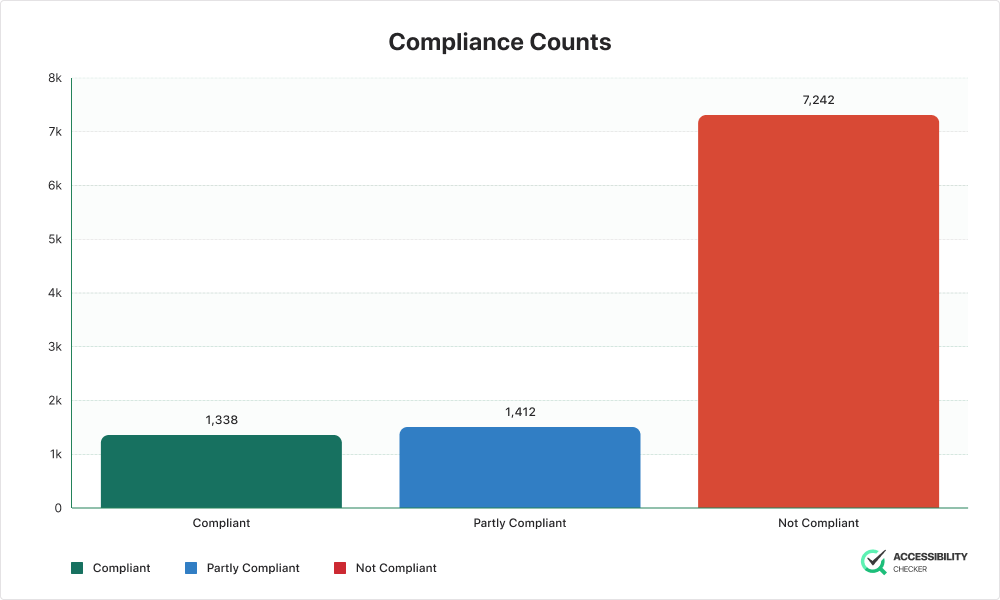
We also looked at these websites in terms of industries and found that the business, arts and entertainment, education, and the technology and computing sectors have the highest number of non-compliant websites.

In terms of the industries with the highest number of compliant websites, the sports, finance, science, real estate, and food and drink sectors stood out, but still had a high number of non-compliant websites too.
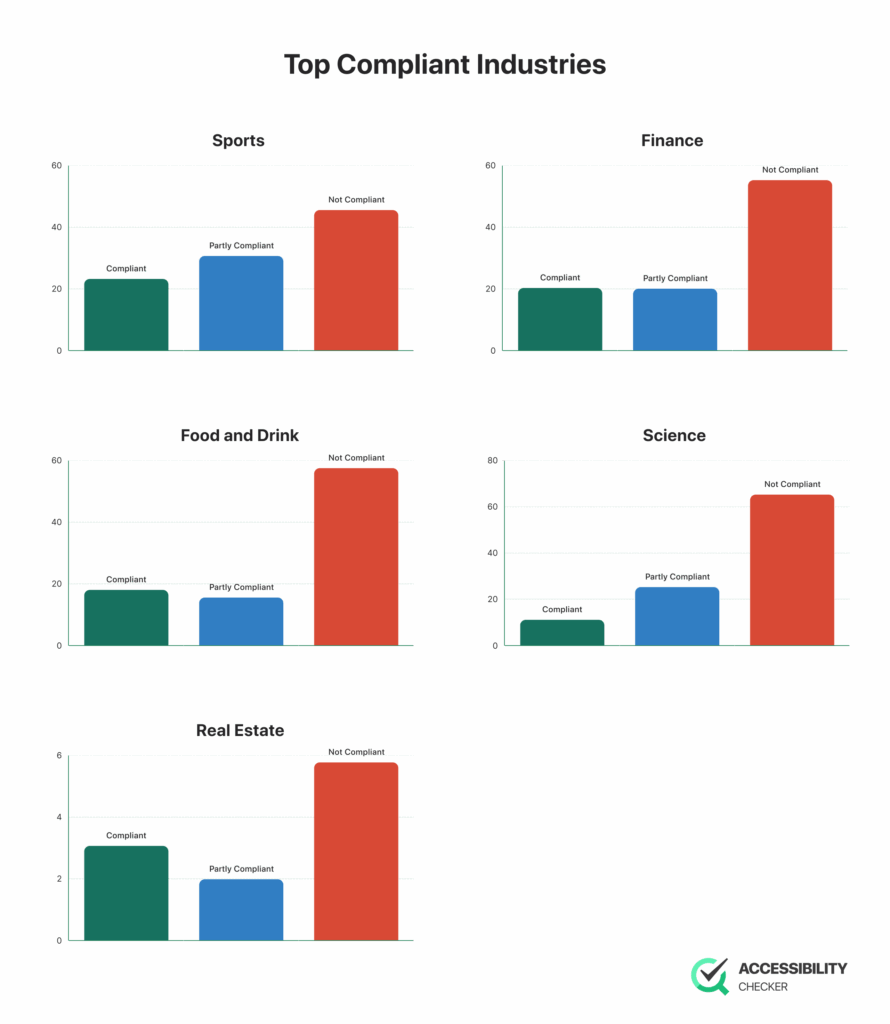
Web Compliance Score vs Organic Traffic
When examining the the relationship between a website’s accessibility compliance score and its logarithmic organic traffic from the last full month, we saw a positive correlation between these two factors.
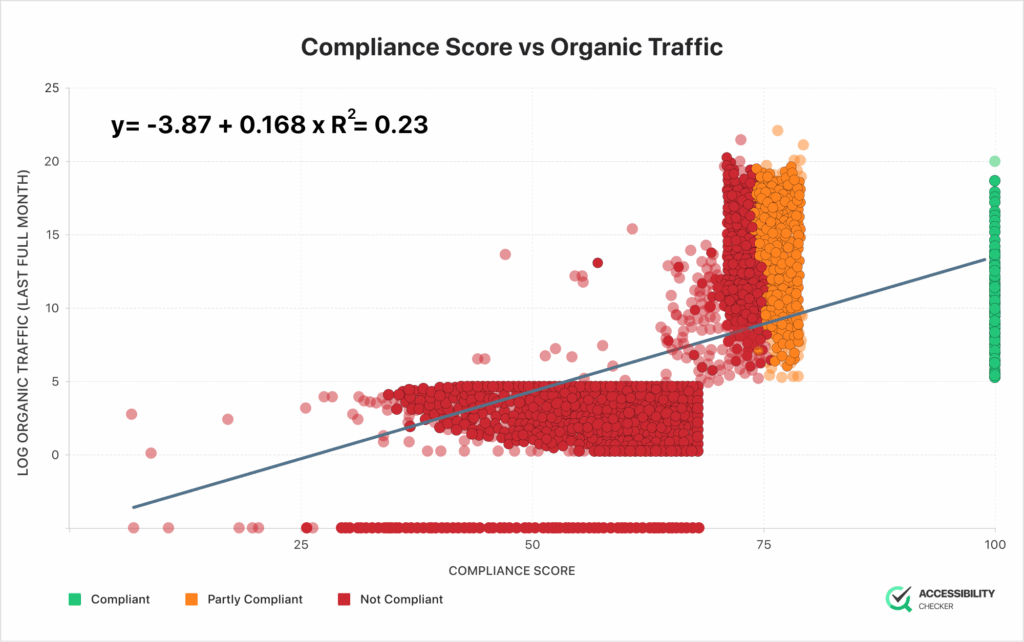
Positive Correlation: The chart clearly shows a positive correlation between web compliance and organic traffic. The upward slope of the blue trend line and its corresponding equation, y=−3.87+0.168x, indicate that as a website’s compliance score (x) increases, its logarithmic organic traffic (y) also tends to increase.
Strength of the Relationship (R 2 ): The R 2 value of 0.23 highlights that 23% of the variation in a site’s organic traffic can be explained by its compliance score. This means that while accessibility is a significant factor, other elements (like content quality, backlink profile, and domain authority) also play a major role in determining traffic.
Web Compliance Score vs Organic Keywords
In the case of keywords, another positive correlation was found, showing that the higher the compliance score, the higher the number of organic keywords a site ranked for.
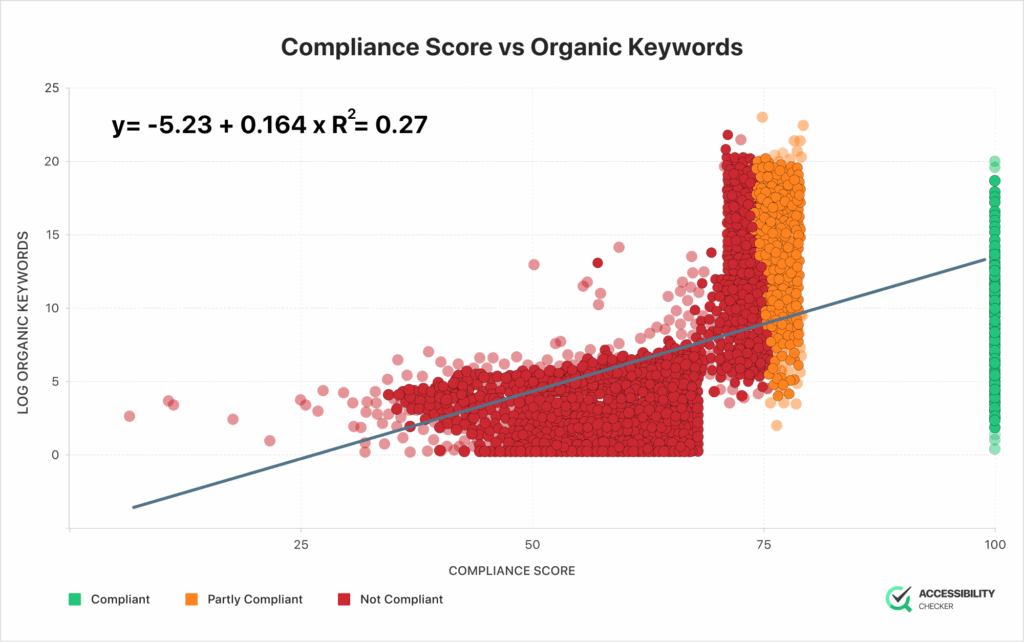
Positive Correlation: The plot reveals a positive correlation between a website’s compliance score and its organic keyword count, which can be seen in the upward slope of the blue trend line. The equation of the line, y=−5.23+0.164x, mathematically confirms that as the Compliance Score (x) increases, the Log of Organic Keywords (y) also tends to increase. In simple terms, more accessible websites tend to be found for more search terms.
Strength of the Relationship (R 2 ): The R 2 value of 0.27 indicates that 27% of the variation in the log of organic keywords can be explained by the compliance score.
Overall, these results suggests that accessibility is one of many factors influencing a site’s organic search performance, but it’s not the sole determinant.
Web Accessibility Compliance vs Semrush Authority Score
Web accessibility compliance scores and Semrush authority scores were another two factors that showed a fairly positive relationship.
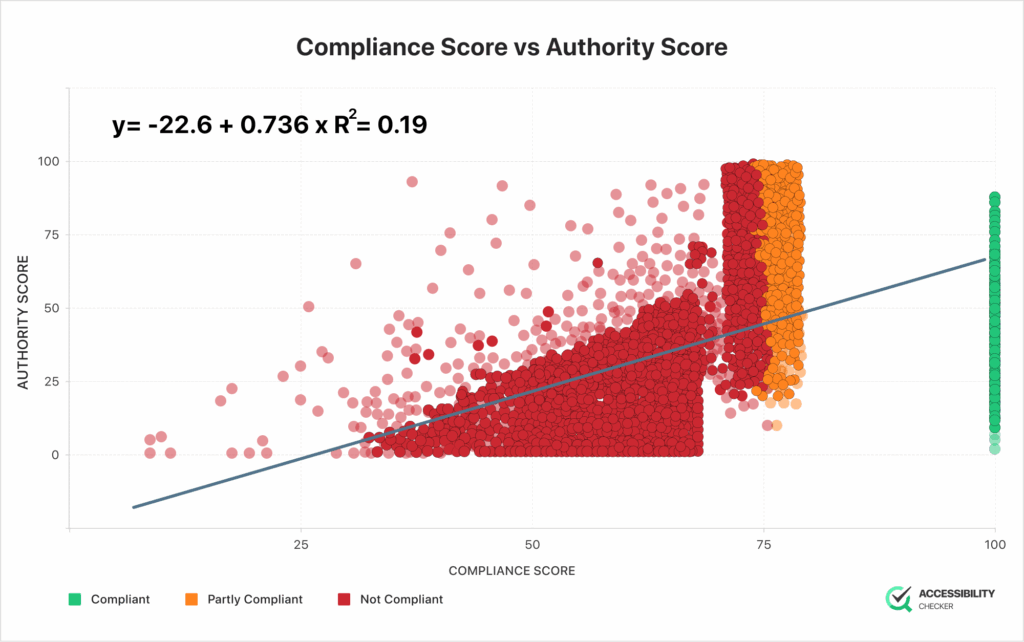
Positive Correlation Persists: Similar to the previous charts for organic traffic and keywords, this plot shows another positive relationship. The trend line’s equation, y=−22.6+0.736x, confirms that as the accessibility compliance score (x) improves, a website’s Authority Score (y) also tends to increase.
Strength of the Relationship (R 2 ): The R2 value of 0.19 indicates that 19% of the variation in Authority Score can be explained by the compliance score. This weaker link is logical, as an Authority Score is a complex metric that is heavily influenced by factors outside of on-page accessibility, such as the quality and quantity of backlinks from other websites.
A Quick Disclaimer
*It’s almost impossible to be 100% certain of the results.
**Many factors can affect the results of a study, including the sample size, the method of data collection, and the way the data is analyzed.
***Even if a study is well-designed and well-executed, there is always the possibility that the results could be more accurate. For example, larger sample sizes and studies conducted over years instead of months.
Disclaimer: This research is an independent research.
Getting Started On Your Web Accessibility Journey
Now that we’ve highlighted the positive impact that web accessibility can have on your SEO efforts, you might be wondering about which steps to take next.
Here’s what we recommend:
- Learn everything you can about web accessibility. Starting with our Guide to Web Content Accessibility Guidelines (WCAG) and the our Guide to ADA Compliance is highly recommended.
- Check where your website stands by running your home page through our Free Web Accessibility Checker.
- Check the color contrast of your website’s code using our free Color Contrast Checker.


